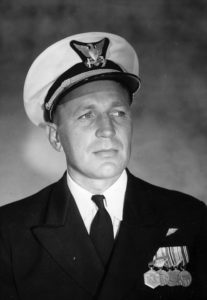
C Douglas Kroll ‘71
John Mayo Waters Jr. was born on the first day of August 1920 in Arapahoe., a small town in eastern North Carolina. John stated in his Oral History that he could still remember the Memorial Day parades when he was in grammar school. The parade was led by a college band and the National Guard marched. It was only 10 to 15 years since the end of WWI. He further stated around 1933 or 1934 he used to go to movies like “Hells Angels” and “Wings” and sit through three performances. He was impressed with the military.
John played football and boxed in High School and joined the National Guard. He went on the 1938 Third Army Maneuvers in Mississippi. and then to North Carolina State University on a football scholarship. He saw the war coming and applied to the Service Academies. When he returned from the 1939 maneuvers there were two letters waiting for him; one from his congressman with an appointment to the Military Academy at West Point and one in response to a nationwide examination he took resulting in an appointment as a Cadet at the U.S. Coast Guard Academy. John mentioned in his Oral History that he sought out an ROTC Instructor at North Carolina State, that he knew personally, a Colonel in the regular Army, and asked for his advice as to which appointment he should take. John quotes the Colonel as saying “John, it all depends on whether you want to eat out of mess kit or of a white linen table cloth”.
John had picked up the name “Muddy” by this time and in July 1939, Sargent John “Muddy’ Waters became a cadet at the United States Coast Guard Academy class of 1943. Initially, there were 75 in the class, however, on September 1, 1939, Germany invaded Poland, and shortly thereafter an additional 75 Cadets came aboard as members of the class of ’43. On December 7 1941 the Japanese attacked Pearl Harbor. War was declared and the class of ’43 was rescheduled to graduate on June 19, 1942. The tempo at the Academy increased markedly.
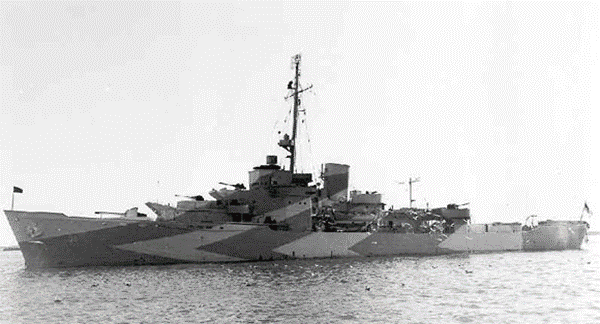
Upon Graduation, John Muddy Water’s initial assignment was the U. S. Coast Guard Cutter Ingham WPG-35, homeported out of Boston Massachusetts but operating out of Iceland, performing North Atlantic Convoy escort duty. Muddy was the Gunnery Officer and a Deck Watch Stander. Convoy duty on the North Atlantic during World War II was hazardous duty. There were 2,828 merchant ships sunk, killing 45,000 mariners. Muddy served on the Ingham between 6/24/42 and 8/23/44. The winter of 1943 was the turning point in the battle when gains exceeded losses and the Escorts began to make headway against the German submarines. ADM Doenitz withdrew the Wolfpacks on May 1st 1943. Muddy stated that he visited with ADM Doenitz in Hamburg after the War and the Admiral told him that when he withdrew at the end of 1943, he knew they would lose the War because they were unable to cut the supply line to England
In 1967 Muddy wrote his major non-technical work, Bloody Winter. An excellent history and very good read, it covers the key convoy battles of the North Atlantic over a six-month period, 1942-43, including several he had experienced when serving aboard the USCG Cutter Ingham.
It is based on records and interviews of both Allied and German sources. Muddy showed respect for sailors of all nations who fought in the battle. RADM Otto Kretchmer of the German Navy, an outstanding U-Boat Captain during the early phases of the war, wrote the Forward to Bloody Winter
In 1944 Muddy was reassigned to pre-commissioning detail for USS Admiral C.F. Hugues AP 124, a Troop Transport. in Alameda California as the Gunnery Officer. Muddy said they went many places; as far east as Marseilles at the end of the war in Europe, and picked up 5000 of General Patton’s troops, mostly engineers, and took them to the Philippines. Then to Guam, New Guinea, Truck, and other locations in the area. He further stated that took the first load of wounded out of Iwo. There were surgical teams aboard and worked all the way back to San Francisco.
Muddy requested a combat ship and he was given command of the USS Savage (DE-386) in the Aleutian Islands, Alaska. He stated in his Oral History that the only real action up there was when he was ordered to go to Petro Pavios in Siberia. Russia had entered the War in the Far East and Muddy was supposed to deliver a Special Strategic Service Team.
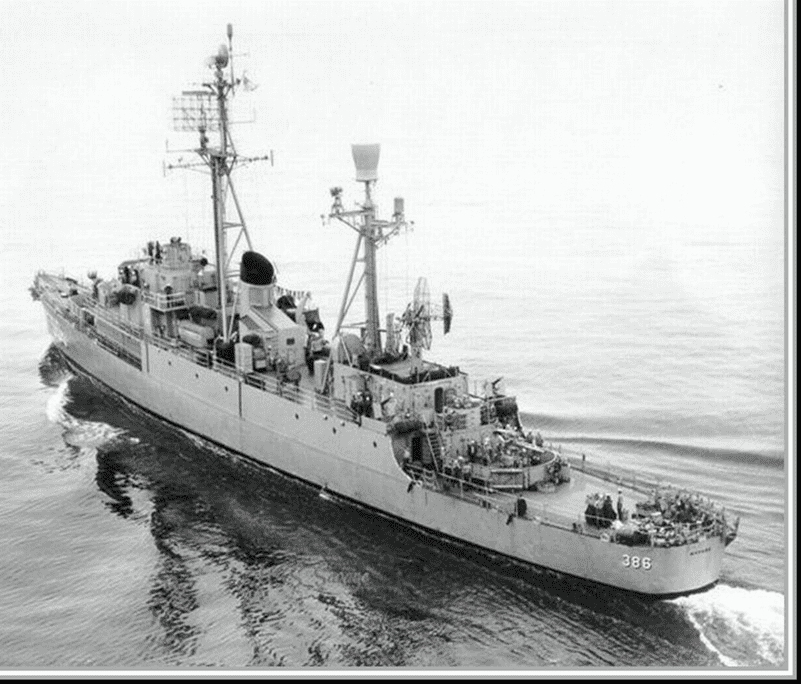
After Siberia the Savage was assigned to the occupation forces in China. It was based in Tsingtao. The Savage, as part of CORTDIV42 was assigned to Operation Magic Carpet. Operation Magic Carpet was the post-World War II operation to repatriate over eight million American military personnel from the European, Pacific, and Asian Theaters. Beginning in October 1945, over 370 Navy ships were used for repatriation duties in the Pacific. The Savage did SAR work and provided escort for ships transporting troops through mined areas. If mines were encountered, the DE escorts formed a tight screen ahead and if needed an Emergency-Turn was given to the troopship and while it drifted in a safe area the DE would either explode the mine or sink it. Rifle fire was best for exploding- you hit one of the horns, 20mm machine gun fire was effective in sinking the mine.
Tsingtao was in Chinese Communist territory. The Communists had fought a Guerilla War against the Japanese in this area. Shortly before Christmas the Savage was ordered to search for 5 Marine F7F fighters that had overflown Tsingtao, broken up and believe down in the area of the Shantung Coast. One marine F7F was located on the beach. The Communist Forces were engaged in fighting the Nationalist further south but there was an attempted detente taking place between US Forces and the Chinese Communist Forces in the north. Muddy went ashore with a marine Colonel and negotiations took place. It was agreed to allow the F7F to take off. Fuel in five-gallon cans and steel matting was brought ashore from an LST. The pilot attempted a take-off but ran out of mating ending up nose down in the sand. The plane was burned. The pilot was not hurt but the airplane was beyond repair. Later when continuing the search, on one occasion Savage was fired upon from shore The Group Commander ordered them not to return fire. A message came through to proceed to Weihaiwai on the north coast of Shantung. A LST skipper had picked the wrong port for liberty as Weihaiwai was now in Communist hands. Upon arrival one of the Communist conditions for entry was that all guns be covered. Seeking cooperation, it was done. After anchoring Muddy went ashore to meet the Communist Commander. Muddy stated the conversation was friendly so he invited the Commander aboard ship. He was honored with side boys and bosun pipes. Coffee and cheesecake were served. The Commander presented a bottle of Chinese Brandy which Muddy later gave to CPO mess. The LST situation was solved.
In March of 1946 CORTDIV 42, LCDR Bill Earle USCG commanding was finally ordered back to the States for decommissioning at the Charleston Navy Yard. Muddy stated that when they got to Pearl Harbor, LCDR Earle was detached to serve on a board of investigation. As Senior Commanding Officer Muddy took over the Division. Things had moved fast. Four years previous Muddy had been a senior Cadet: Now at age 25, he was leading the column of six warships with over a thousand men aboard. The Division had picked up 400 Army troops packed aboard going home. The Division was now headed to Charleston by way of San Diego.
After a short stay at Charleston, the Savage proceeded to Green Cove Springs, Florida where the ship to be laid up in the Reserve Fleet. On 13 June, 1946, the Savage was decommissioned. The crew of the Savage and Escort Division 42 were the last of 200,000 Coast Guardsmen who had served in the Navy in WWII, to return home.
Muddy was given Command of the CGC Aurora, WPC 103 with orders to sail her to Mayport, Florida. In 1946 the Navy had left Mayport and given it to the Coast Guard. There were two JRFs. at Mayport. This was followed by orders to the Search and Rescue Agency at Coast Guard Headquarters in Washington D.C. as chief of the Emergency Equipment Section. Muddy stated in his Oral History that after three years of action and two Commands sitting in a small office with one secretary got to him. Like many it was a big comedown after the war. He was thinking of leaving the Service. He requested acceptance into George Washington Medical school, and was accepted but with a wife and child he had no idea where the money was coming from. He discussed it with his Boss, Bill Shavel, an aviator, who asked him if he had ever thought of becoming an aviator? Bill went on to say that the pay was good and that there would be a good bit of action that would increase in the future. Bill got Dick Burke, head of aviation, to come down and he said “I still have one slot open” Muddy said he would like to think about it overnight. Burke told him that he needed a decision now. Muddy said that he said yes, he wanted to go. Muddy said, that was 10:00 am in the morning and I got my orders that afternoon. Muddy went on to say that he was in a car-pool and as he was going to the Parking lot Les Baker was there and he said “Waters, I hear you have orders to flight training” I said “Yes” He said “It’s too bad you had to ruin a promising career.” It was an honest sentiment. It was 15 years before this sentiment completely disappeared. In September of 1947 Muddy reported to Naval Air Station Pensacola, Florida. He completed his flight training at Naval Air Station Corpus Christi, Texas and was designated Coast Guard Aviator No. 534 in November of 1948.

Muddy’s first aviation Duty Station was the Coast Guard Air Station (CGAS) Elizabeth City. The CGAS Elizabeth City was commissioned on August 15, 1940, with four officers, 52 enlisted men, and ten aircraft. Three Hall PH-2 seaplanes, four Fairchild J2K landplanes, and three Grumman JF-2 amphibians In 1948, when Muddy arrived, the mission was Search and Rescue and the primary aircraft were PBMs and PB1Gs.
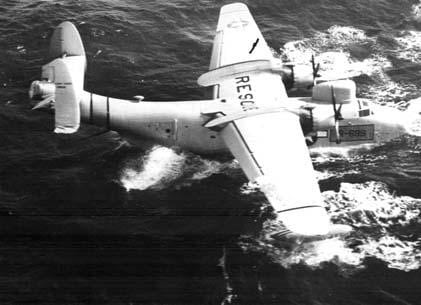
As a result of the Korean War, it was deemed necessary to have advanced ASW patrols to counter the increased Soviet submarine activity. VP 49, flying PBM Mariners, was the first to return and make the Naval Station Bermuda it’s base of operations. In the summer of 1952, the Navy requested that the Coast Guard establish a SAR unit at Bermuda in support of naval air operations.
Arrangements were made for the establishment of both a Group and Air Detachment by the USCG Office of Aviation. Muddy was assigned to the original crew and remained in Bermuda until he transferred to CGAS San Diego in 1955.
Muddy served as the Operations Officer at San Diego. In response to his efforts, the Air Station was authorized to update the off-shore Landing and Take Off procedures pioneered by Capt D.B MacDiarmid. Changes were targeted to a specific area. Pilot training was conducted at CGAS San Diego. This was in response to a large expansion of commercial long line fishing into the eastern Pacific. High catch rates of tuna were made in the in the southern portion of the Gulf of California off the west coast of Mexico and northwest off the west coast Baja California Mexico to north of Magdalena Bay. Primarily due to location and lack of Mexican capability, medical evacuation of injured seaman or rescue of crew due to fishing-vessel problems, was handled by CGAS San Diego. This required, in most cases, a landing in the open sea or the Gulf of California. PBM-5 seaplanes were used for this operation.
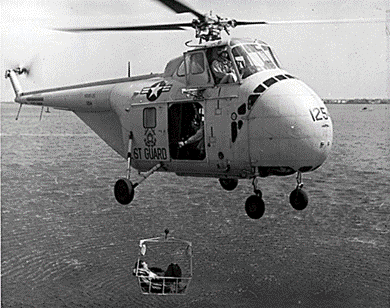
Coast Guard HO4S-3G helicopterWhile at CGAS San Diego Muddy became a Coast Guard helicopter pilot. His designation number was 206.
In 1957 he was transferred to CGAS Miami. Florida as the Executive Officer and two years later he became the Commanding Officer. The tempo of operations became high due to a Cuban Exodus that began in 1959 after the Cuban Revolution, led by Fidel Castro. had begun to introduce communism.
In 1961 Muddy was assigned to Operations Division, Coast Guard District One and in 1962 he became the Commanding Officer of CGAS Salem.
In 1964 he was assigned to Coast Guard Headquarters, first as Chief of the Search and Rescue Division and later as the Chief of the Aviation Division. During these assignments, he developed two official publications which became standards; The National Search and Rescue Manual and Aircraft Emergency Procedures Over Water.
He also conceived and obtained funding for the National Search and Rescue School. This was not without opposition. The school opened in October of 1966 staffed by six SAR experts from the Coast Guard and the Air Forces Rescue and Recovery Service on Governors Island New York. In 1989 the SAR school relocated to the Coast Guard Training Center, Yorktown Virginia, In the first forty years since its opening in 1966, more than 29,000 SAR professionals have graduated, including over 2,174 international Students from 148 nations. The National SAR School is recognized as the world’s premier source for Search and Rescue (SAR) training.
When the Coast Guard was transferred to the Department of Transportation in 1967 Muddy was given a special assignment as Chief of Emergency Medical Services in the National Highway. In this position, he established a program of rescue services for highway trauma victims.
Muddy retired in 1968 at the rank of Captain, with over 26 years of service. Following his retirement from the Coast Guard, he became the Director of Public Safety in Jacksonville, Florida, a position he held for eleven years. Muddy was appointed a Clinical Professor at the University of Florida’s School of Medicine.
Muddy died from cancer at the age of 72 on 28 August 1992.
Epilogue:
John Mayo “Muddy’ Waters, during his career, commanded two ships and two Air Stations. He participated in more than 3000 SAR cases, promulgated National SAR Procedures .and founded the National SAR School. In addition, he was an accomplished writer. C Douglas Kroll in his tribute to Muddy, referred to him as a Dynamic Author/Historian/SAR Expert. He was even more. He was a visionary with the unique ability to propose and implement his ideas in a practicable manner, an attribute but also his Achilles heel. Often Muddy. “ruffled” a few feathers along the way and in certain instances a good many more than a few. There are times when improvement or upgrade, defined as something better or is better than something else. is inhibited or in some cases repressed by Tradition. Tradition, in most cases is a positive. It provides a sense of continuity between the generations, upholds morale and instills pride. Unfortunately, it can also be used as a tool by those adverse to change or fear it.
Like most of the aviators of my time and a good many of our sea-going brethren, I knew of Muddy and was aware of a number of his accomplishments. In the early spring of 1965, I had the privilege of meeting him. I was the Maintenance Officer at the CGAD Arlington, Virginia at the time. I had worked with Grumman Aircraft Corporation to set up a maintenance system for the Coast Guard G159 Gulfstream. This system was later adapted and used for our VC-3A (Martin 404) VIP aircraft. A simplification of the system is, “The aircraft were always in a progressive check but never out of service except for an engine change or major modification”. Muddy evidently had checked me out as he was aware that I had been the Maintenance Officer at the CGAD Guam before CGAD Arlington and had a good bit of HU-16E time. He asked if I could adapt the Maintenance System we were using to the HU-!6 and what would be required. I told him yes and gave him an initial rough draft. I never heard anything more about it but it did provide me the opportunity to meet and confer with Muddy on several occasions. He impressed as a warm, talented highly competent individual.
John “Bear” Moseley

CG Aviator 743
Historian CGAA
Captain John “Muddy” Waters Jr. USCG
Bibliography
| Oral History John Muddy Waters | Foundation for Coast Guard History |
| Rescue at Sea – First Edition | Captain John M. Watters author 1996 |
| Rescue at Sea – Second Edition | Captain John M. Waters author 1989 |
| To The Far East with Savage | C Douglas Kroll PHD’71 Feb. 2012 |
| Capt John Mayo Waters | Capt William K. Earle ’40 Feb 1993 |
| CDR Jules DuPeza ‘49 | Capt William K. Earle ’40 Feb 1993 |
| Tribute to Muddy | CDR Jules DuPeza ‘49 |
| Search and rescue Problem Areas | John M. Water August 1965 |
| Excerpts from Service Record | US Coast Guard |
| Obituary | Two sources |

